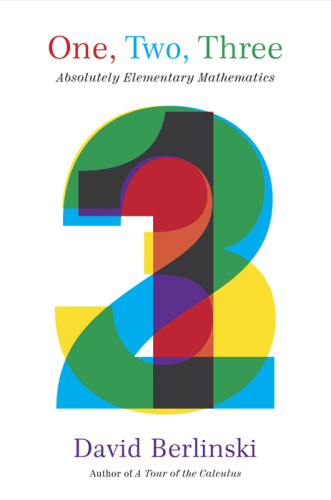
One, Two, Three
Absolutely Elementary Mathematics
کتاب های مرتبط
- اطلاعات
- نقد و بررسی
- دیدگاه کاربران
نقد و بررسی

March 14, 2011
Math writer and teacher Berlinski is well-known for hid 1997 book A Tour of the Calculus. In this outing he reintroduces readers to their childhood friends, the integers, bringing out their complexity in a way elementary school teachers never did. For instance, he cites a book by the 19th-century German mathematician Richard Dedekind, whose title poses key questions about the nature of integers: "what should numbers be, and how should we think of them?" Berlinski devotes the book to exploring these questions, which are more vexing than they appear, if, as Bertrand Russell noted, numbers are neither objects nor properties of objects. Berlinski leads readers through basic operations like addition and multiplication, the development of set theory, and a cautious foray into the realm of negative numbers, but skirts any extensive discussion of counting systems based on numbers other than 10. The book is often a triumph of style over content; Berlinski's rhetorical flourishes amplify clumsy factual errors: for instance, Heidelberg was not "blasted to smithereens" in WWII. Many readers will be able to find other popular introductions to mathematics more to their liking.

March 1, 2011
Philosopher and math populizer Berlinski (The Devil's Delusion: Atheism and Its Scientific Pretensions, 2008, etc.) takes on the challenge of explaining the logical foundation of the elementary operations of arithmetic.
It's no easy task. Indeed, it was not until the late 19th century that mathematicians were inspired to develop the axioms (unproven assumptions) enabling the development of theorems to prove the legitimacy of all those rules of thumb you learned in high school—e.g., that the product of two negative numbers is positive, or to divide fractions you invert the divisor and multiply. Along the way, mathematicians developed set theory, which showed that the operations possible with numbers could be generalized to define arcane structures called rings or fields. Why bother, Berlinski writes in the introduction, noting that most people dislike math. However, he continues, the reason is because such work has the grandeur of the absolute, of something deep in the human imagination. So readers with an open mind to, say, Peano's five axioms for the natural numbers, may be putty in the hands of Berlinski. The author examines the world of integers, embracing positive and negative numbers, and then fractions, and he introduces many of the hallowed names of 20th-century mathematicians and logicians with charming asides and literary references. The author also explains the various laws of associativity and commutativity that the numbers obey, as well as the value of proof by induction and how it derives from Peano's fifth axiom.
"New math" for adults this is not. Rather, Berlinski delivers a tour de force by a mathematician who wants the intellectually curious and logically minded student to understand the foundations and beauty of one of the major branches of mathematics.
(COPYRIGHT (2011) KIRKUS REVIEWS/NIELSEN BUSINESS MEDIA, INC. ALL RIGHTS RESERVED.)

























دیدگاه کاربران